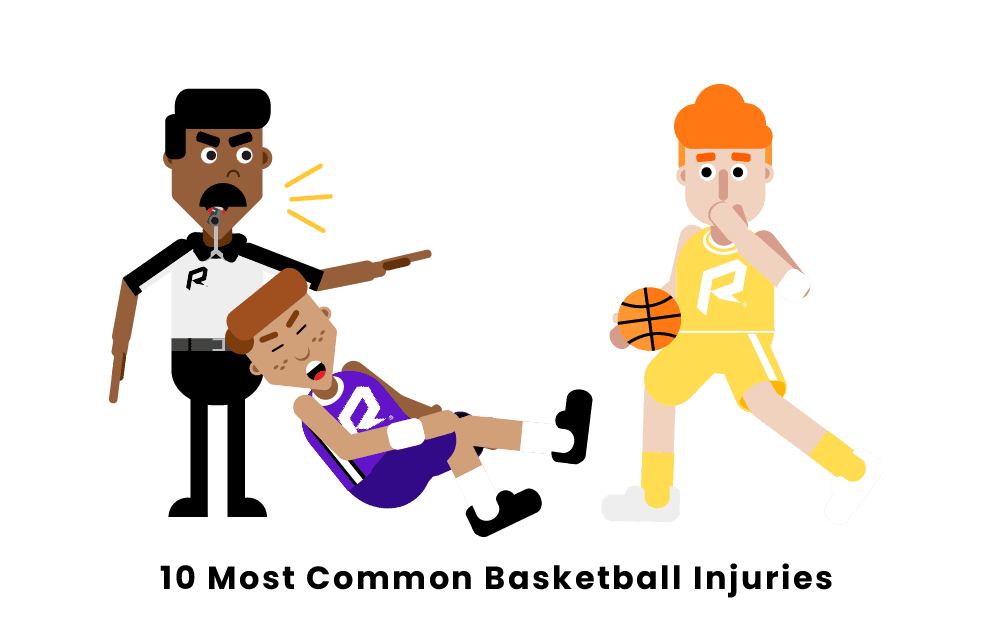Basketball is one of the most popular sports globally and has a high risk of injury due to its physical nature. Ankle sprains, knee injuries, hamstring strains, Achilles tendon rupture, and wrist fractures are among the most common injuries in basketball, and players must take precautionary measures. Stretching before games, wearing appropriate protective gear, gradually increasing workout intensity, and avoiding sudden movements are some of the preventative measures players can take to prevent injury. Players that experience any pain or physical trauma should consult a medical professional immediately. By adopting prevention measures and understanding common basketball injuries, players can remain safe while enjoying the game.
The Top 10 Most Common Injuries in Basketball and How to Prevent Them
Basketball is a high-intensity sport that requires great physical exertion, agility, and speed. It is also a sport that is associated with a high risk of injury. According to a report by the Centers for Disease Control and Prevention (CDC), basketball is among the leading causes of sports-related injuries in the United States. In this article, we will look at the top ten most common injuries in basketball, their symptoms, and prevention measures.
1. Ankle Sprains
Ankle sprains are the most common injuries in basketball. They occur when the ankle ligaments are stretched beyond their normal range of motion, leading to tearing or injury. Symptoms include swelling, pain, and difficulty walking. To prevent ankle sprains, players should wear ankle support, stretch before games, and avoid jumping or landing on uneven surfaces.
2. Knee Injuries
Knee injuries are also common in basketball. They can range from ligament sprains to ACL and MCL tears. Symptoms include pain, swelling, and instability. Players can prevent knee injuries by wearing knee pads, stretching adequately and avoiding sudden changes in direction.
3. Hamstring Strains
Hamstring strains occur when the muscles in the back of the thigh become overstretched or torn. Symptoms include pain, swelling, and difficulty walking. To prevent hamstring strains, basketball players should warm up before games, stretch adequately, and avoid sudden or excessive movements.
4. Shin Splints
Shin splints are characterized by pain along the front lower leg. This type of injury is caused by the excessive use of muscles, tendons, and bones around the tibia. Symptoms include pain, swelling, and tenderness. Players can prevent shin splints by wearing proper footwear, stretching, and gradually increasing the intensity of workouts.
5. Achilles Tendon Rupture
A ruptured Achilles tendon is a severe injury that can occur with sudden or excessive movements. Symptoms include a sudden snapping sound, sharp pain, and difficulty walking. To prevent Achilles tendon rupture, players should avoid sudden and abrupt movements, stretch adequately and wear proper footwear.
6. Wrist Fractures
Wrist fractures are common among basketball players since they frequently use their hands to dribble, shoot or deflect the ball. Symptoms include pain, swelling, and difficulty moving the wrist. Players can prevent wrist fractures by wearing wristguards, avoiding falls, and landing safely.
7. Concussion
Concussions are a type of traumatic injury that occurs when the brain bounces against the skull. Symptoms include headache, dizziness, confusion, and memory loss. To prevent concussion, players should wear a helmet and avoid physical contact with other players.
8. Dislocated Shoulder
A dislocated shoulder occurs when the upper arm bone pops out of the shoulder socket. Symptoms include pain, swelling, and limited mobility. Players can prevent dislocated shoulders by doing exercises that strengthen the rotator cuff and wearing proper protective gear.
9. Teeth Injuries
Teeth injuries are common in basketball. They can range from cracked or broken teeth to tooth loss. Symptoms can include bleeding, pain, and sensitivity. To prevent teeth injuries, players should wear a mouthguard and avoid physical contact that may damage the teeth.
10. Lower Back Pain
Lower back pain is a common injury among basketball players, caused by excessive stress on the muscles and soft tissues of the lower back. Symptoms include dull, aching pain and stiffness. To prevent lower back pain, players should stretch adequately, avoid overtraining, and use proper lifting techniques.
Conclusion
Basketball is a great sport that offers many physical and mental benefits, but it also requires players to take precautions to prevent injuries. By understanding the top ten most common basketball injuries and implementing prevention measures, players can stay safe while enjoying the game. Remember, prevention is always better than cure, and players should always consult a medical professional if they experience any pain or injury.
